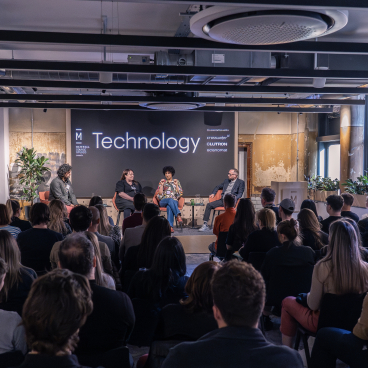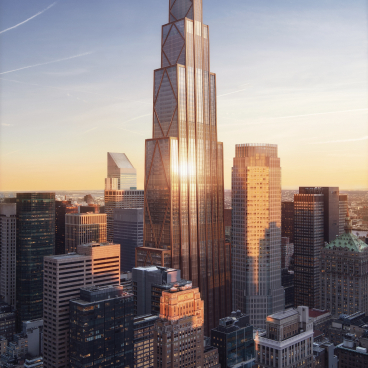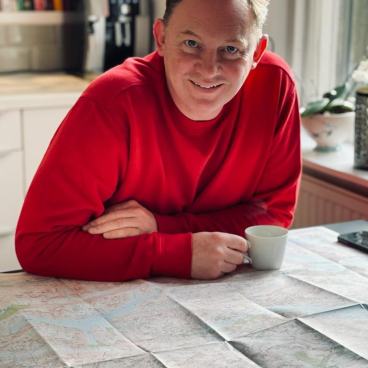What are the effects of a technologically advanced workplace?
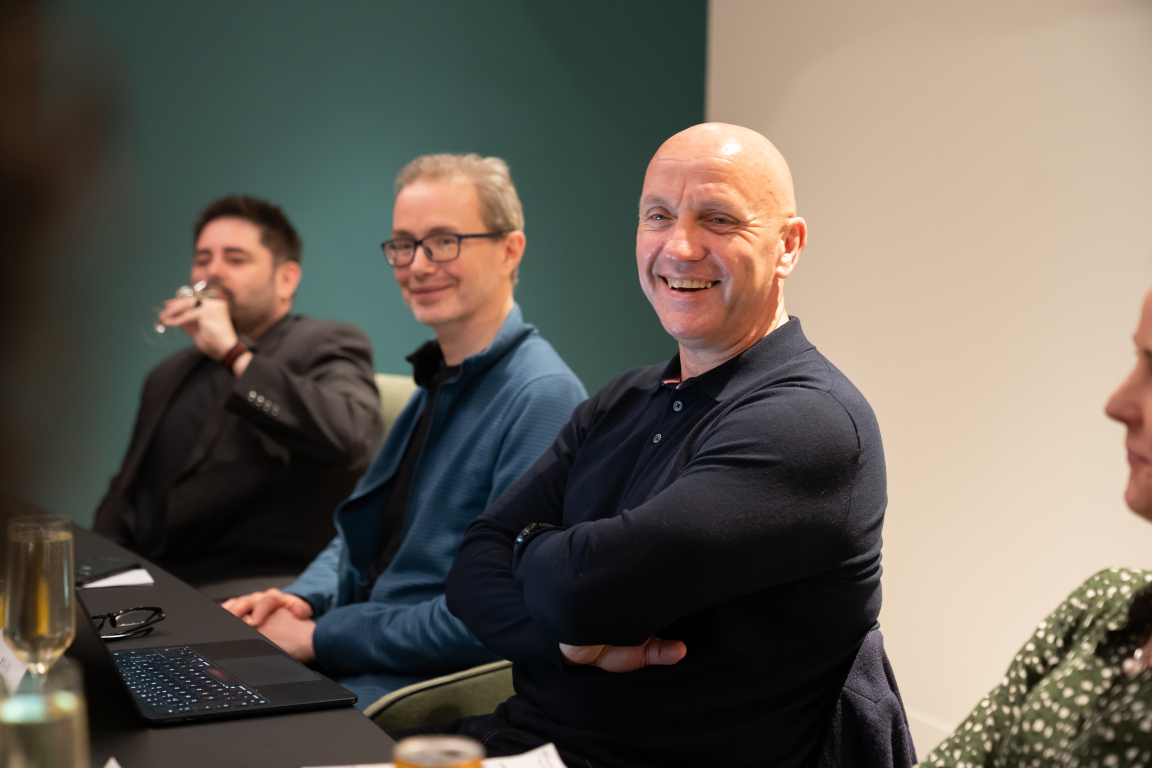
Following on from our successful Technology seminar, which focused on three key themes ‘Technology that Enables, Monitors and Controls’, we delved further into this rapidly moving subject in our latest roundtable discussion.
We brought together a wonderful panel of thought leaders in the world of technology, each one sharing valuable insights. Chaired by Material Source director, David Smalley and with just an hour to discuss the subject, the conversation considered what are the technological standards in a forward-thinking workplace and what are the regular technology issues we’ve still yet to overcome.
Leading to a heated debate around the technological advances that work, and the ones that don’t, within our current workspaces, we also looked to the future and where we will be in five to ten years’ time with technology constantly updating and evolving. The lively discussion just scratched the surface of this fast-developing topic. Here we share the highlights.
Our Panel

Gwenno Mair Jones, Associate at Buttress

Daniel Barker, Senior Director, Real Estate at NODE Technologies

David Wood, Associate Director at Chapman Taylor
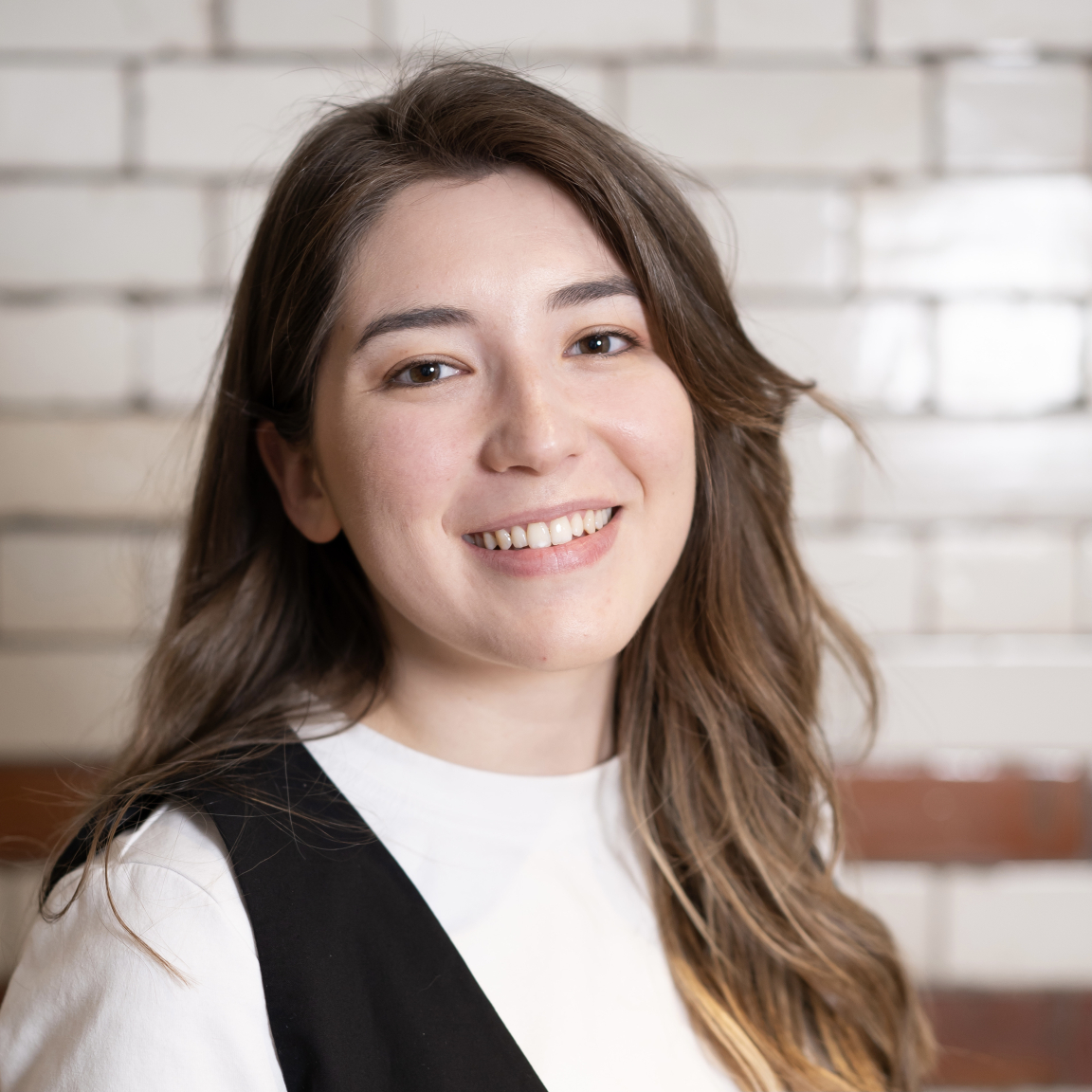
Lois Blackwell, Interior Design lecturer at Manchester School of Art

Nick Atkin, Chief Executive at Yorkshire Housing
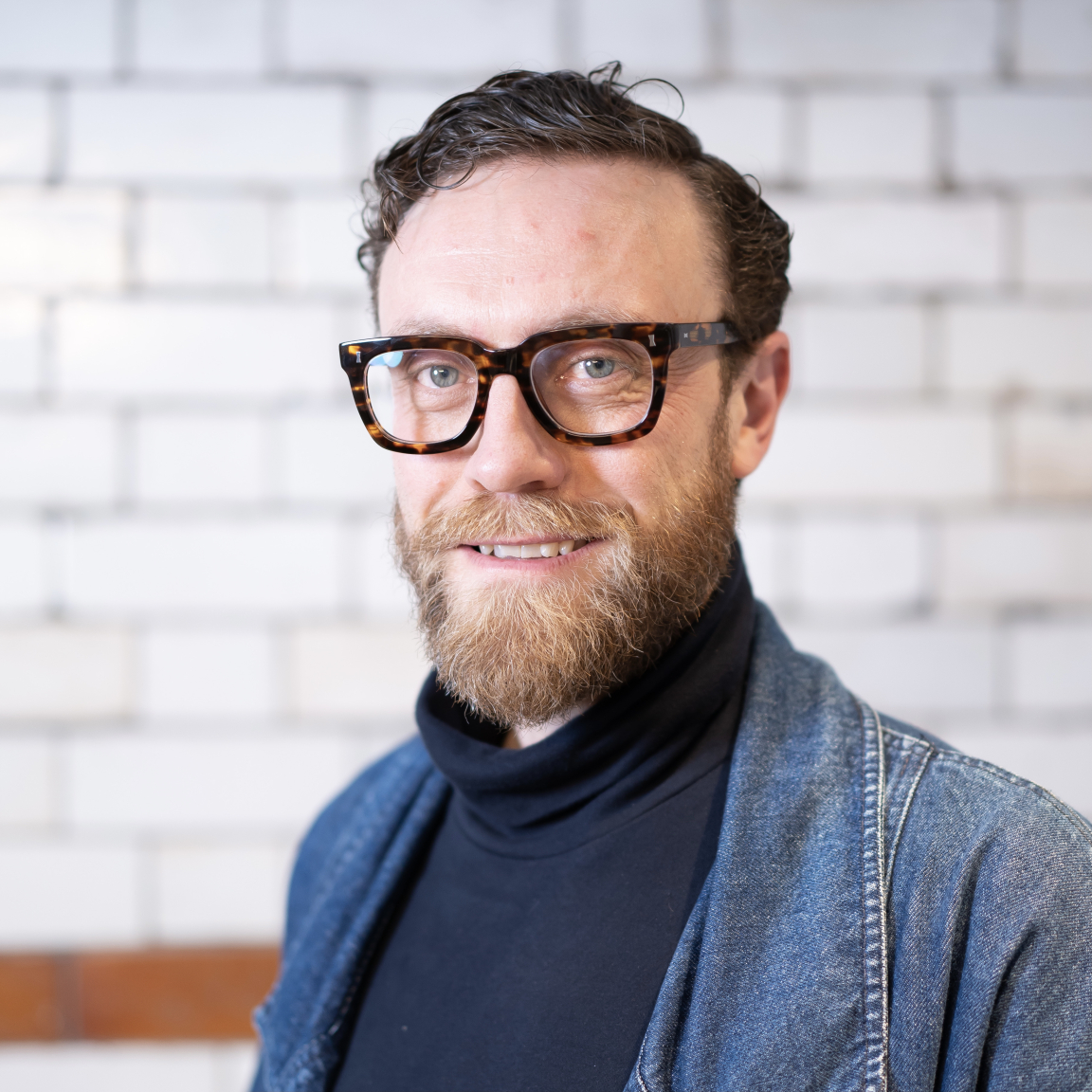
Craig Mitchell, Workplace Designer at Government Property Agency

Jason Oak, Workplace Strategy & Design at AstraZeneca
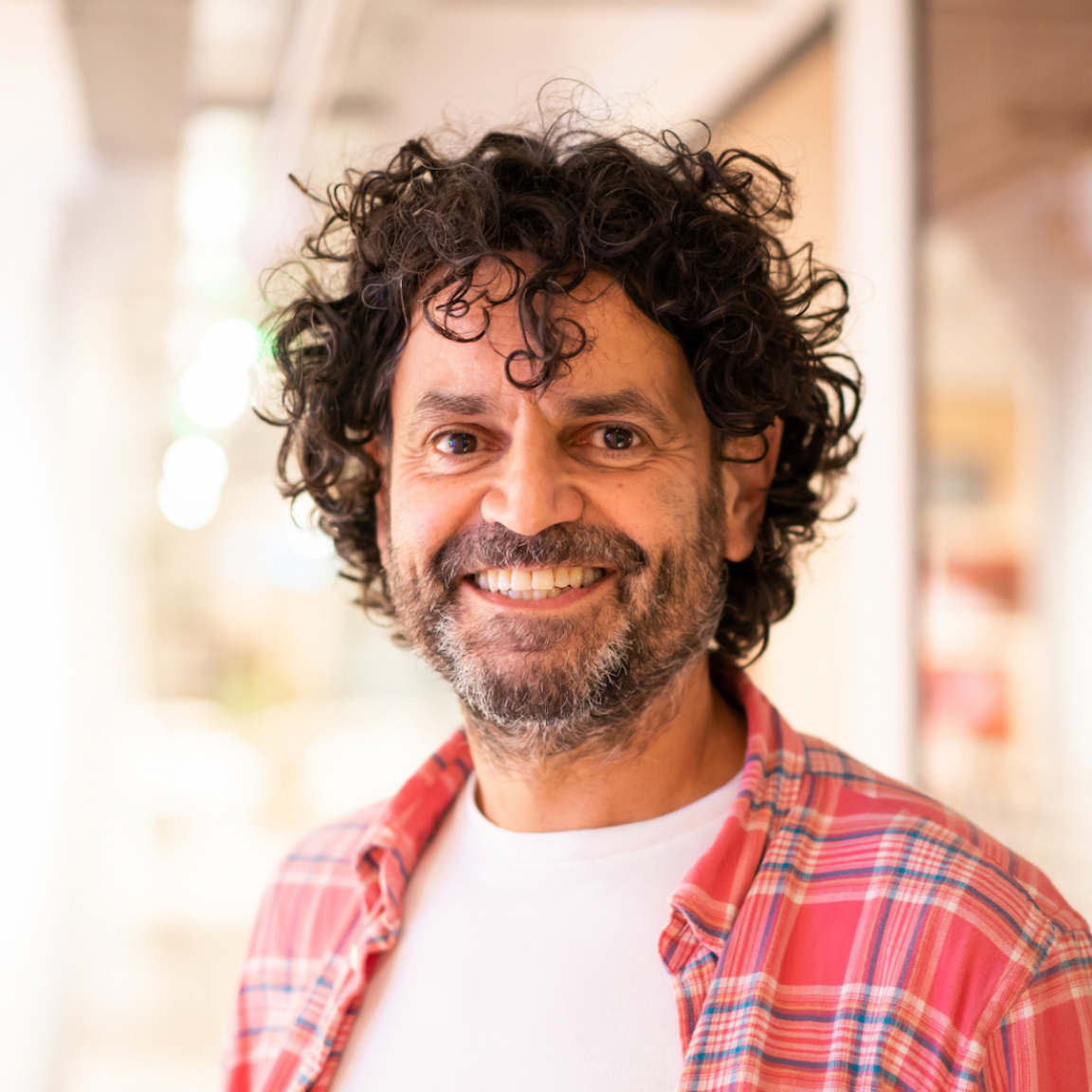
David Smalley, Director, Material Source Studio
To kick off the discussion David asked: What is the accepted technological standard in a forward-thinking workplace?
Nick the CEO of Yorkshire Housing has just finished designing and developing the Yorkshire Housing Hub, an innovative workspace which disrupts our traditional ways of working. Nick started the discussion, “the days of people being shackled to a desk are over. I think there is a very different generation, a very different expectation for workspace. Workspace is more than that, it’s about how do you get the best out of people and to do that everything has to work seamlessly.
“Tech has inane ability to not do that, to make it really difficult. My personal view is that the design of workspace has moved on but interestingly the kit that is installed, the technological kit is still working in a pre-pandemic, what I call a BC world, a before Covid world. It hasn’t kept up with the fact that not everybody needs to be in the room to be in the room.”
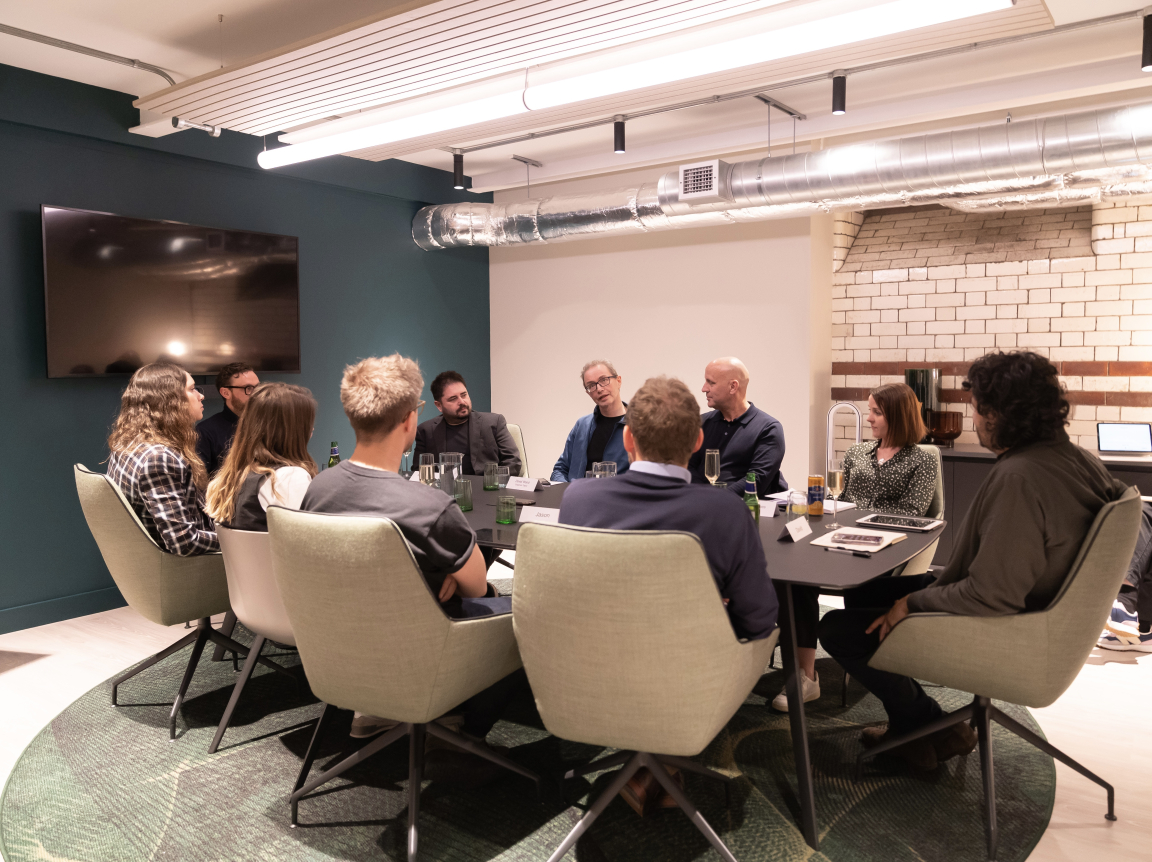
Jason added that historically there has always been a frustration around technology and meetings which has accelerated with the introduction of Teams calls, “we’ve all been there, with the ‘you're on mute’ and those kinds of comments. The challenge there is how is the tech going to support our increased efficiencies and how is it going to be simpler to use? Tech has this kind of strange relationship with people, it promises something but often doesn’t deliver, in the way you want it to.”
David Wood believes that people working within this environment need additional skills for technology to run smoothly, “you can say it’s IT’s problem, but IT can only meet people halfway. People have got to adapt and notice that they need to talk to the microphone, present themselves to the camera and make sure the lighting is decent.”
“Part of that relates to inclusivity and accessibility”, argued Gwenno, “It's more than technology. Technology enables people to have flexibility.”
Jason agreed with Gwenno: “Inclusivity is a real change driven in the workplace and not only in tech. Inclusivity i.e access for everybody and equal access for everybody, not only to technology but to spaces. It goes into the wider conversation of what does a hybrid workplace look like. If you think about all of this in the perspective of inclusivity, we shouldn’t be thinking that people need better education.
If we’re spending a lot of time, money and resources on education around the technology, maybe the people aren’t the problem, the tech is the problem - Jason Oak
Lois, an Interior Design lecturer at Manchester School of Art shared with the panel that both teaching staff and students experienced difficulties during the pandemic: “It was a very different situation from businesses, students were there paying £9k a year to have online classes. Looking at it I think some of the lessons were delivered better online but students didn’t see it that way because they missed the human interaction, they missed the socialising and teaching on campus. For us as a teaching team it was challenging during Covid because we bounce off each other just the same as a normal workplace.”
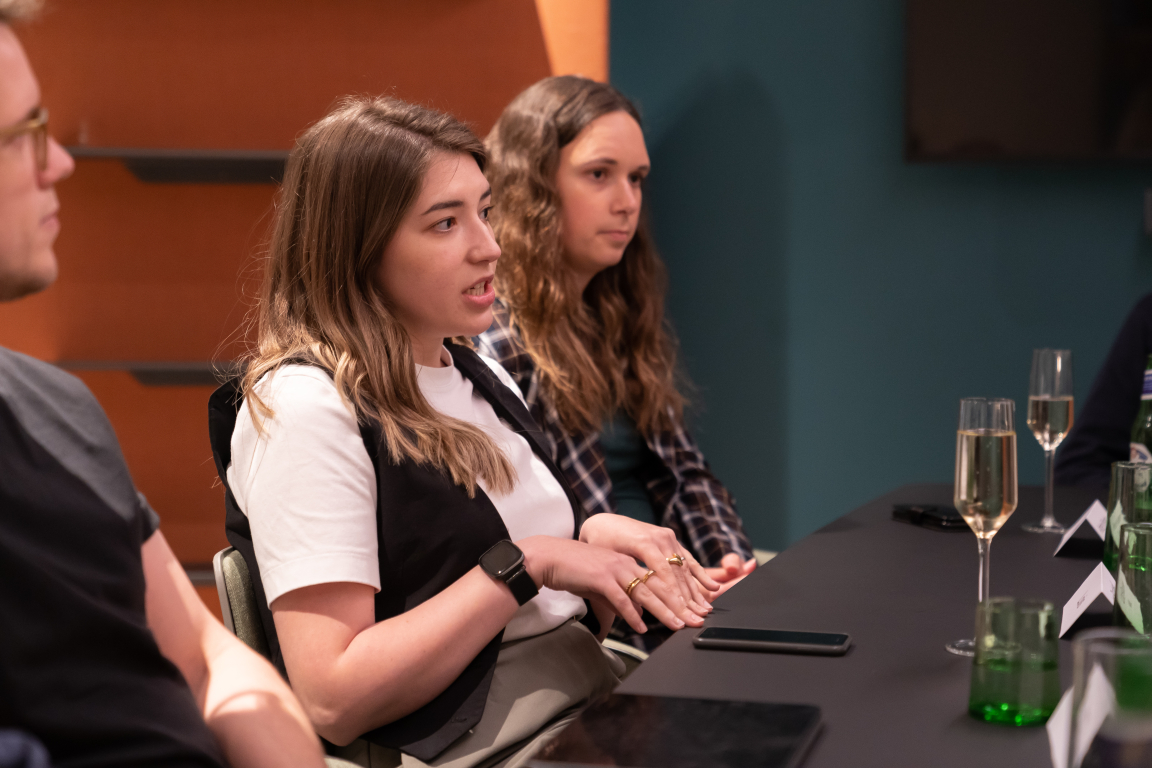
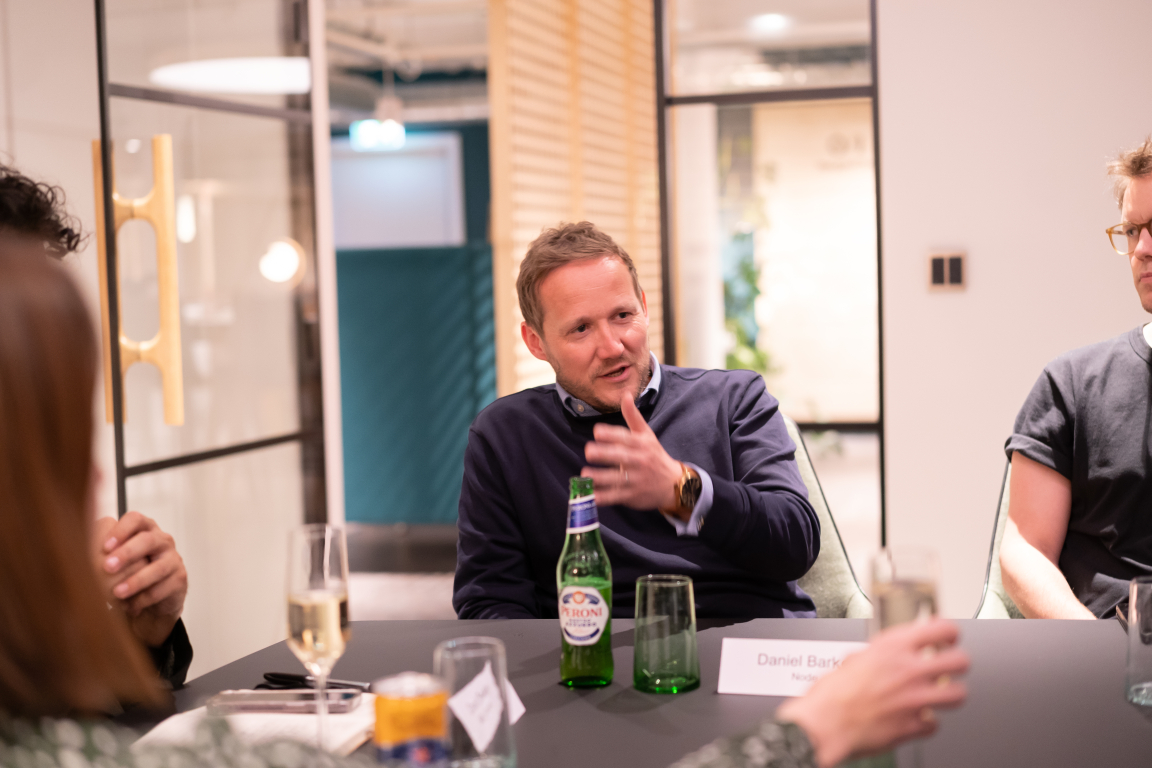
Daniel from NODE Technologies, a forward-thinking property advisory platform briefly described their innovative solution in fibre infrastructure which challenges the traditional model of using a single provider within a building: “What NODE do is we take multiple providers into the building into our NODE and then we run a building backbone fibre which the landlord retains control of, and the tenants then connect into that fibre through the NODE.
“It gives the tenant the choice to pick which ever ISP provider that they want and gives the landlord control in terms of a base build infrastructure which means they can add in smart technology which will run off that fibre as well.”
The common technological issues we encounter within our workplaces was a key area of conversation. In Craig’s view, “the technology and software are there and quite advanced, but the users aren’t using it correctly and the training is potentially not there. I don’t really think we’ve seen the ramifications of Covid yet, in terms of hybrid working and we’re a couple of years away from that embedded knowledge.
“I have colleagues that have never used the Google Jamboard for example.” Craig explained about the benefits of this collaboration tool, “it’s a blank page which you can all feed into, it uses sticky notes, and you can throw ideas onto it.”
David Wood stated that one problem is, “they keep producing new versions of software, you get used to the way it works and then you open up your laptop and it’s different again. Keeping everything working together is quite a trick, both for IT and to help the users to understand the latest thing to use.”
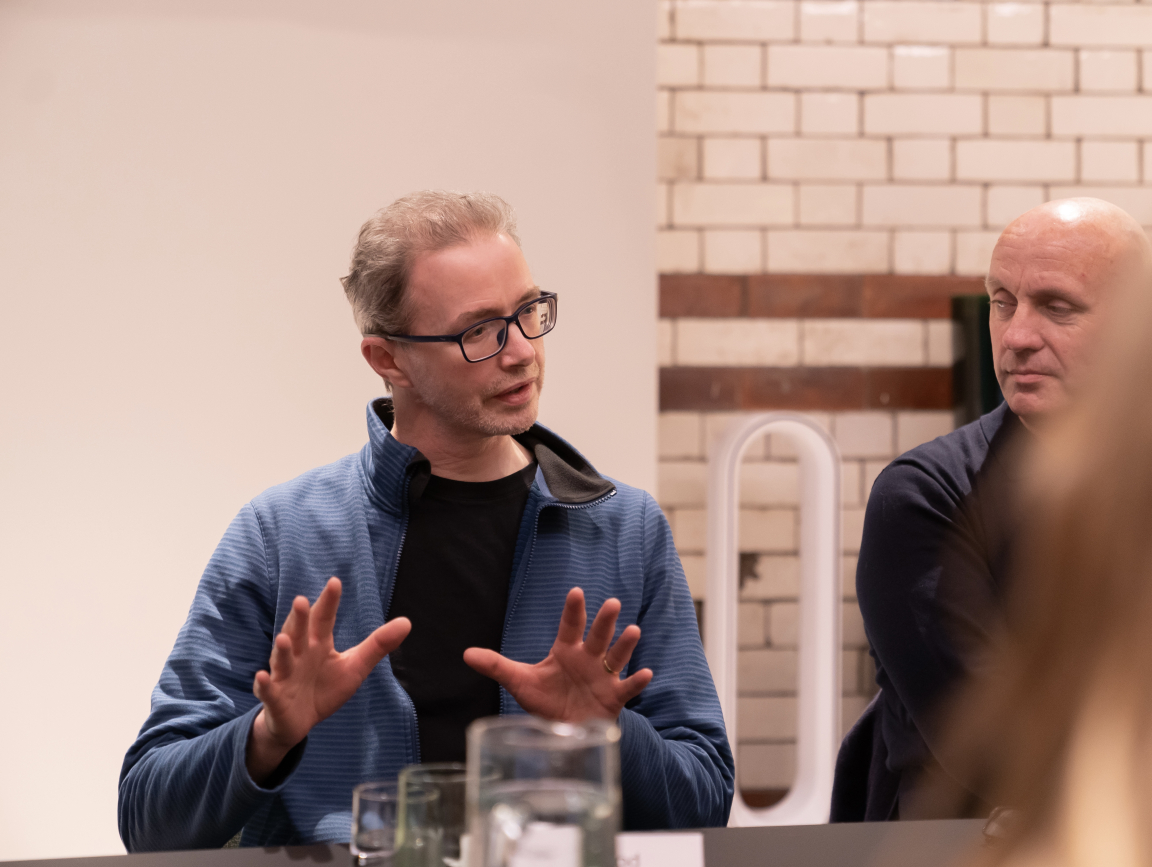
Nick believes that technology isn’t there yet, disagreeing with Craig’s previous point: “Sound is still a major issue even though we’ve just spent an absolute fortune on sound, you can’t have more than one person speaking in a blended meeting, you don’t get the same interaction as you do tonight. The camera as well, the cameras still aren’t good enough, we have cameras that are meant to follow the speakers around but if there is a noise outside, the camera is all over the place. I personally don’t think the tech yet has caught up with that true blended way of working.” David Wood added, “I think for the meeting rooms, it should just work but it’s a tough challenge.”
Lois shared insight from an article that she recently read about the next generation entering the workplace and their experience with tech. “They’re finding it quite tricky to navigate how people from a different generation are expecting them to know everything relating to tech because they were the year that went through university during Covid.” Lois argues that just because they are the younger generation doesn’t necessarily mean they can solve every tech problem.
One key theme to emerge during the discussion was sensors. A hot topic post pandemic with hybrid working now normality, businesses can use data collected from sensors to analyse how workspaces are being used. David asked, are people sensors a basic level of technology within a workplace?
Nick explained why they use people sensors in their workplace, “to monitor how the different spaces are used, so we can then put in more spaces of the type people want or every six months or so we completely change the workspace round because people get too comfortable with it, so we disrupt it, and the sensors help us work this out.”
Jason added, “I think sustainability is a driver, a change driver for that type of tech. The other driver is utilisation of the workplace which also links in with the sustainability because if we have buildings left 30% full then clearly, we have a lot of building there not being used.”
Craig answered from his perspective working within Government: “We have such a large portfolio, and we get challenged often by senior leadership to justify occupancy rates in our buildings, for this we need to draw accurate data from a variety of systems, which can be a challenge.”
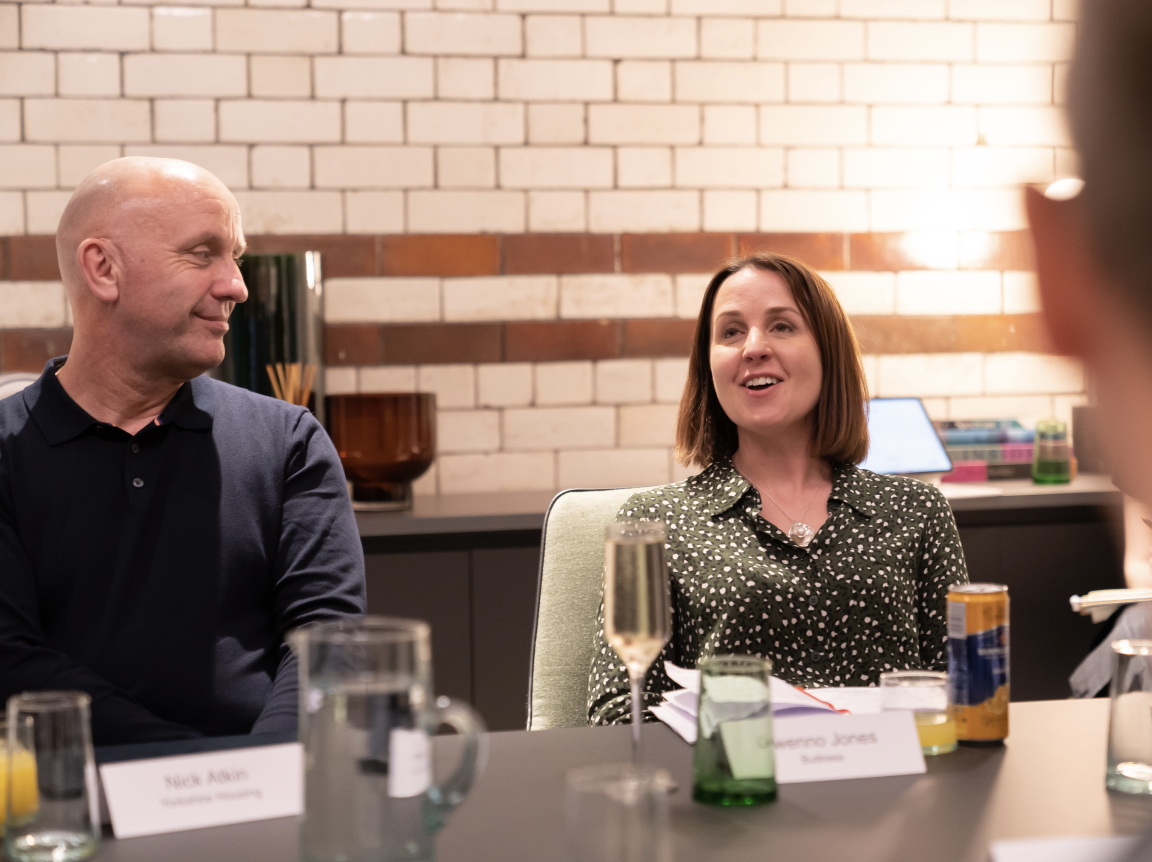
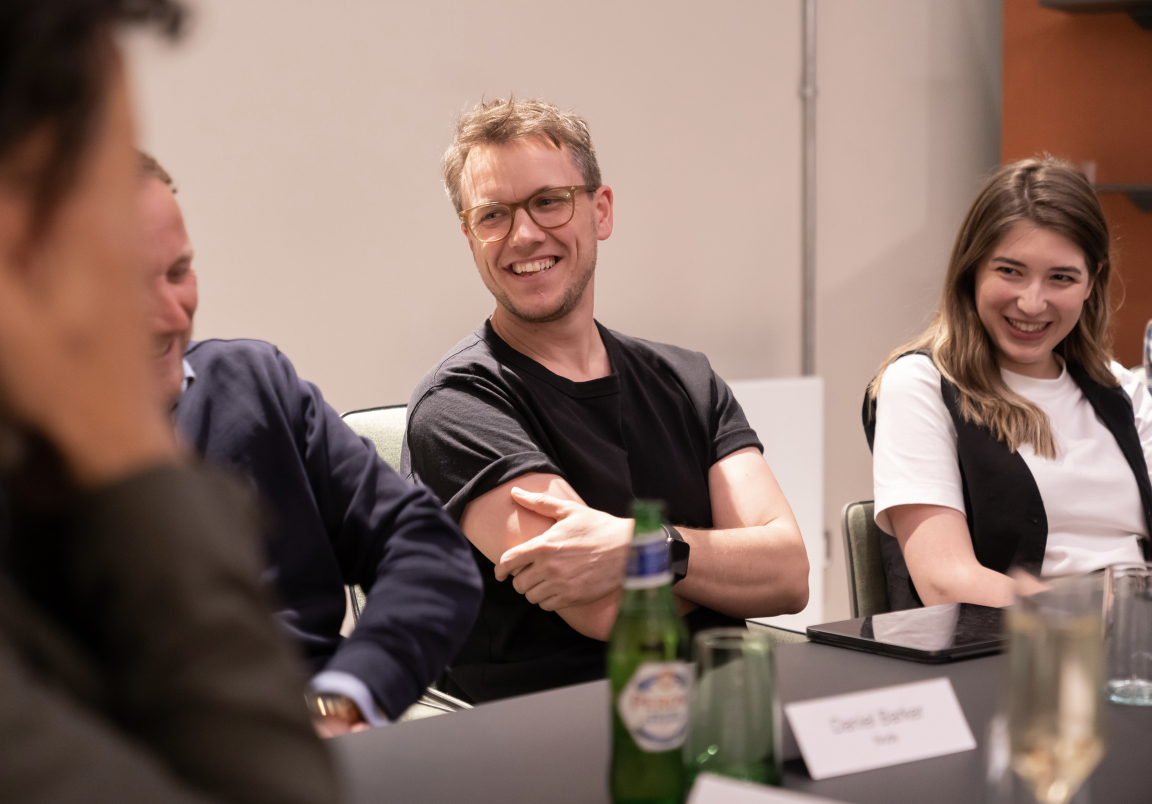
Gwenno is currently working on the Buttress studio upgrade in Manchester. To help track occupancy rates they don’t use sensors, they use an off-the-shelf app they have customised to book desks. This allows them to track the usage and plan their new spaces.“We don’t monitor in terms of people. We’re looking at what the upgrade is going to be and what spaces we’re going to provide. We have an app we book desks through called Joan, we use that to see how many desks we’re using because we’ve grown a lot since Covid, we’ve nearly doubled in size. We no longer have enough desks per person and we’re monitoring how many people we can fit in our current studio.”
Lois enquired whether the app notifies them if there is more demand than seats available, as this would require a different approach spatially. Gwenno answered, “we haven’t got to the point that it’s full. The problem we have is sometimes people turn up and they haven’t booked a space and they might just sit down. We do need to make sure that people are using the app so we’re getting that data.”
Covering both the technological advances and also the hindrances within our current workspaces in depth, the debate rounded off with a look to the future. With hybrid working not going anywhere, how can technology be used to benefit and enable our working methods. David asked our panellists, what technology advances should we expect to see in five to ten years' time?
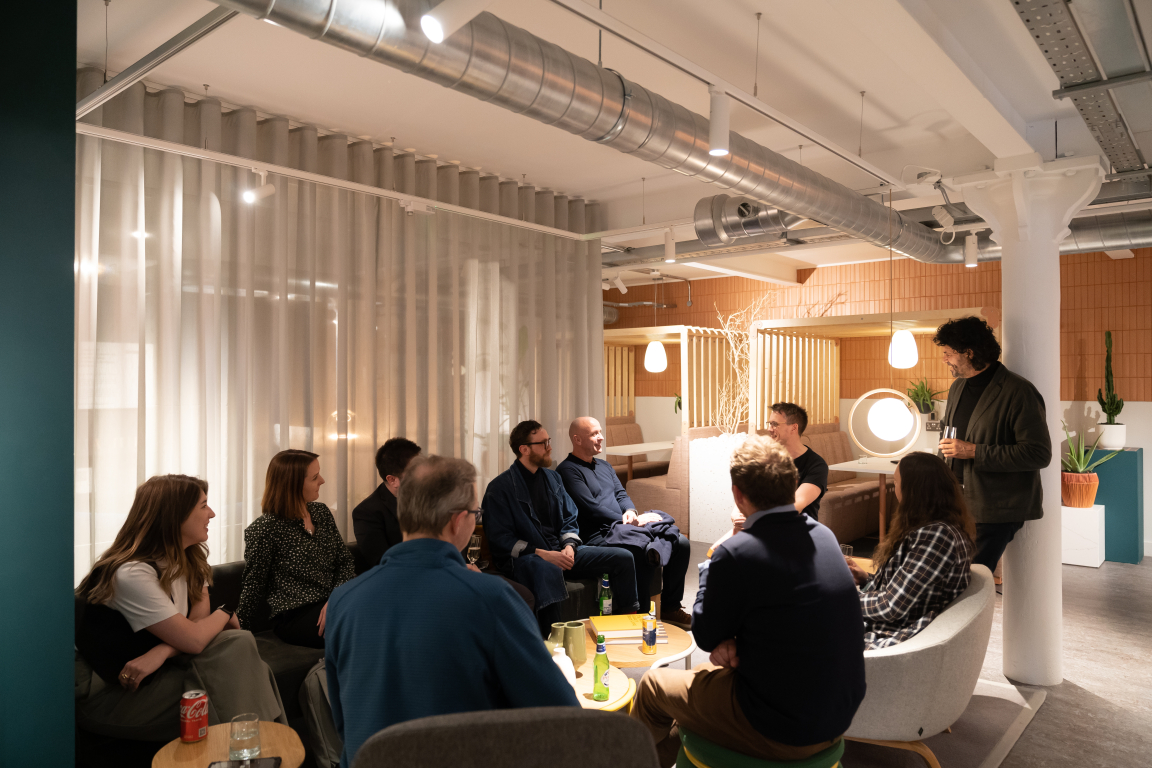
Amber Roberts from one of our sponsors, Crosswater started the conversation, “I would like to see it integrated more with the other key topics, such as sustainability.”
Automation will be a key driver Jason believes, “automation is the thing that is going to be the enabler, automating the processing and capturing of data and then automating the reaction as far as possible to that data. Change in where the air and the heat goes. Then the people behind the data can focus on the key challenges the data has pushed out.”
Nick predicts a future where the workplace can adapt to the user’s needs: “With personalisation I would go one step further than that, the problem with any workspace, some people like it warmer, some people like it cooler. For me you create different temperature zones.” David Wood added, “you make the space.”
Nick further explained his prediction for personalised spaces, “that whole seamless experience, so when I walk into our workspace it knows it's me, it knows I prefer a certain temperature, it’s guiding me to that type of space. It knows I prefer a certain type of lighting because it has seen my calendar and it knows what I’m doing that day.”
The space will be created to get the best out of people, and I think that’s what all of this is about for me, how do you get the best out of people - Nick Atkin
Miguel Aguado from Lutron our other sponsor of the evening believes that controls should add to the user experience: “How do you provide people with the ability to change, even during the day? It’s all about flexibility and the user controls, making sure people can be empowered because things change all the time. Hybrid is not settled so you need the ability to modify your installation.”
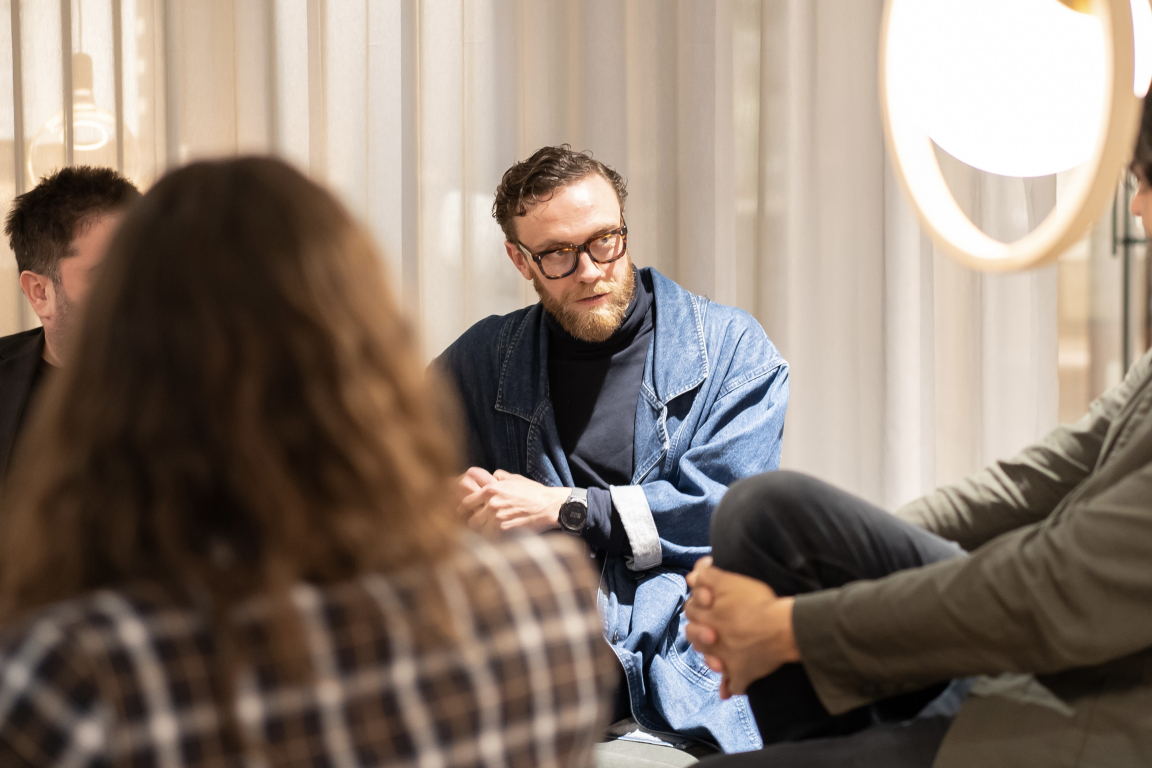
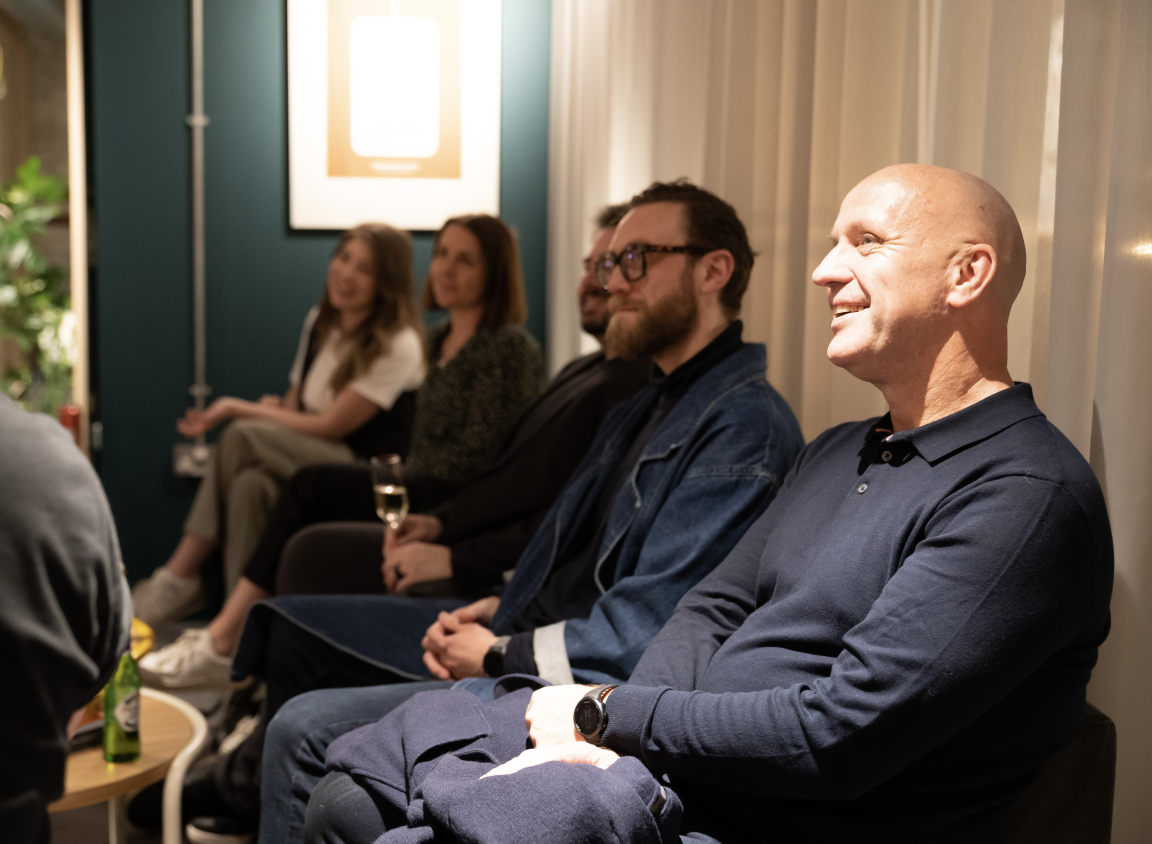
Craig agreed with Miguel that flexibility is key, and we will need to adapt flexible spaces to the technology: “I think screen technology is going to affect things, as screens grow larger, particularly in large AV settings, how do we interact with those and how do they present people onto the screens, that’s going to have a big effect.”
Work culture and technology go hand in hand, one can’t be discussed without the other. For the last 20 years Daniel has mainly worked on his own but explained, “now I’ve got a job where I love going into the office for that engagement and working with people. I think it's going to peak and trough in terms of finding a balance which probably won’t be forever, but it will be an expected norm, until the next thing comes along.”
Gwenno ended the debate with an optimistic view for the future. “With the advent of AI, we’re just on the start of a huge rise in change. We’ll be sat here in a years' time having the same conversation but just looking back and thinking wow all these different things that have altered. I know you’ve said you don’t want to be sitting here in VR but I think at the moment we’ve all talked about how hybrid meetings aren’t working, but they will.”
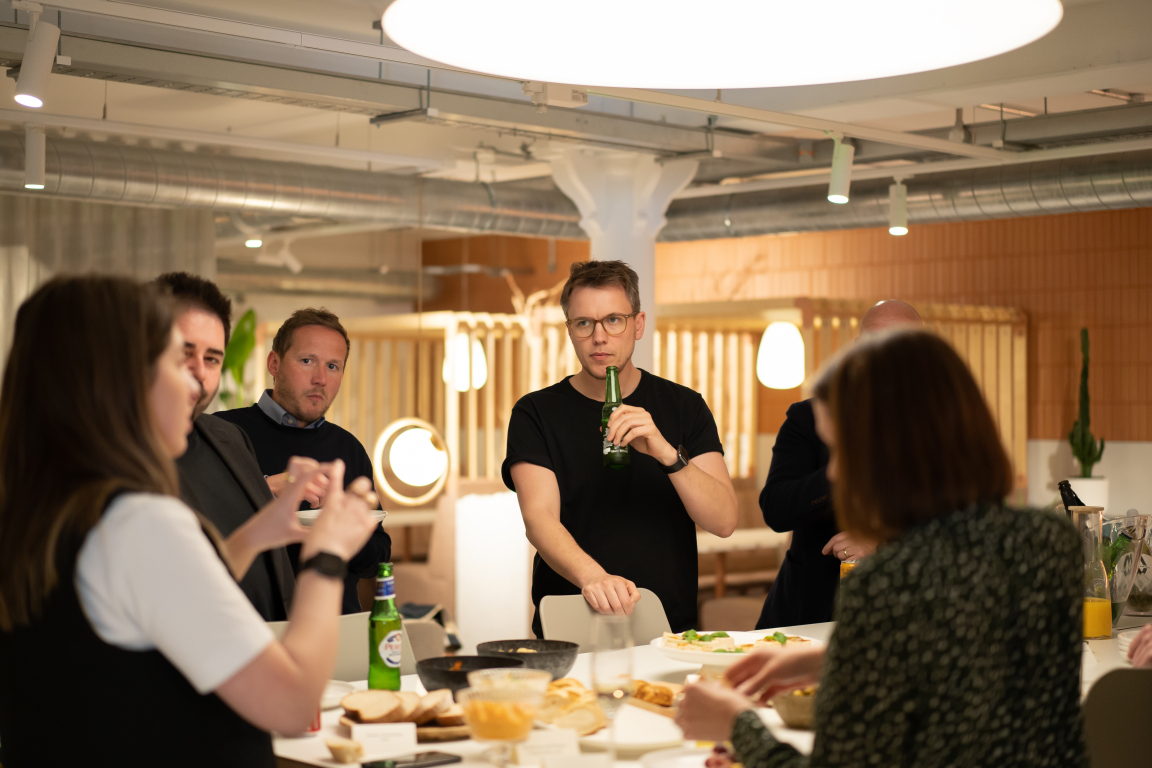
Top takeaways:
- Technology needs to be inclusive, it needs to be accessible to everybody
- Software is constantly updating and changing making it hard for users to stay up to date
- Technology hasn’t kept up with our new blended way of working
- The technological kit isn’t up to scratch in our current workplaces
- Sensor technology can be used by businesses to discover our working habits and help design practical workspaces
- Sustainability is a key driver for the use of sensors within buildings, they can help monitor usage
- Technology and workspaces need to seamlessly integrate for a smoother user experience
- Our future workplaces will focus on an automated experience
- With the development of AI and VR we’re at the beginning of a rise in a drastic technological shift
Our thanks go to all our roundtable guests, and our partners and supporters for the evening, Crosswater and Lutron.
All image credits: Victoria Middleton





